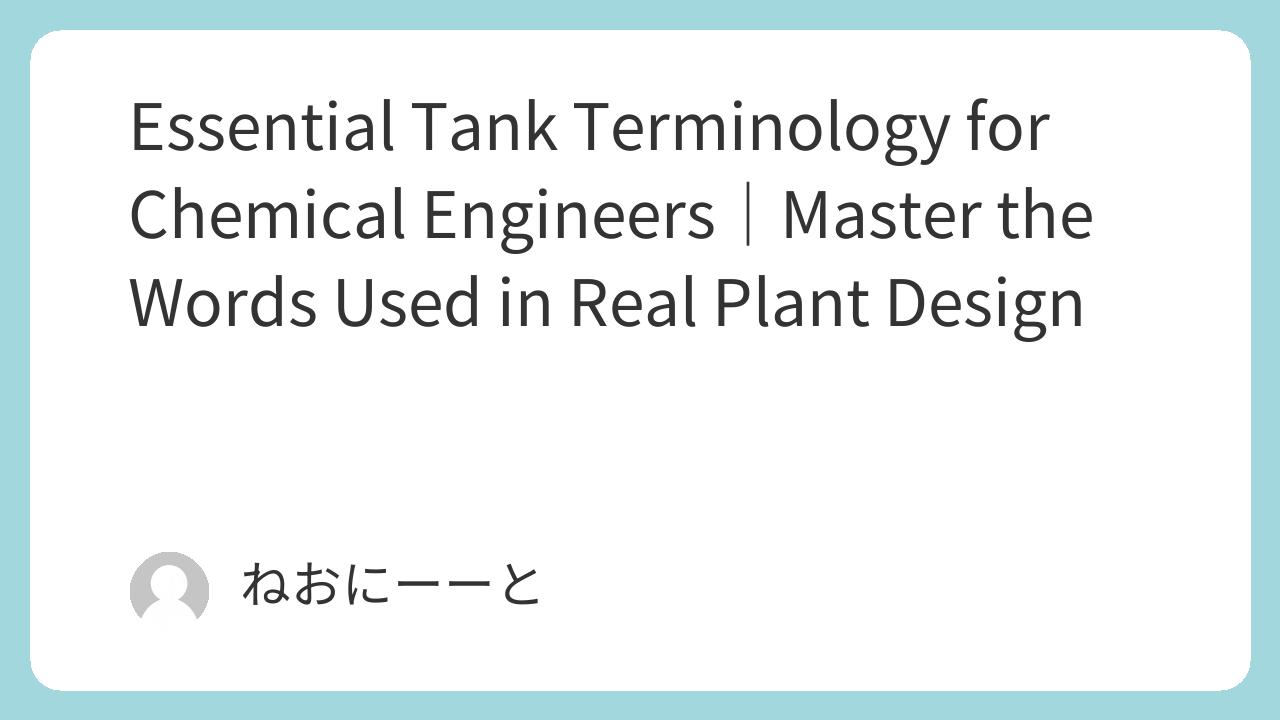Understanding the terminology of tanks is essential for anyone working in chemical plants or industrial design.
From tank shapes and weld lines to jackets, nozzles, and supports — these words appear everywhere in drawings, specifications, and discussions.
This article introduces key technical terms used in chemical equipment design, explained in plain English for engineers who want to communicate confidently at work.
This post is part of the Tank Structure Series:
- [Basic Tank Structure Terms]
- [Design and Structure of Fire Law Class-20 Tanks]
- [Managing Dead Zones in Storage Tanks]
- [Reinforcing Plates for Tank Strength]
- [Manhole Design Basics]
- [Nozzle Patterns and Arrangements]
- [Support Structures for Vertical Tanks]
Tank Shape
Tanks are mainly cylindrical or rectangular in cross-section.
Cylindrical tanks are preferred in chemical plants because they allow easy cleaning and minimize residue buildup.
Rectangular tanks, on the other hand, are suitable for large storage volumes when pressure resistance is not required.
Installation Orientation
Tanks are typically vertical or horizontal.
Vertical tanks are space-efficient and prevent liquid pooling, while horizontal tanks are used in low-ceiling areas or when sedimentation is desired.
Tank Heads (“End Plates”)
The ends of tanks are called heads.
Common types include dished heads (e.g., 10% dish type).
For vertical tanks, we say top head and bottom head.
Two important reference lines are used:
- TL (Tangential Line) – where the head meets the shell
- WL (Welding Line) – the actual welded joint position
Understanding these is important when calculating tank volume or preparing fabrication drawings.
Welding Directions
Tank welding has two main directions:
- Circumferential welds – around the body
- Longitudinal welds – along the length
Designers often overlook weld direction, but it’s essential when checking interference with nozzles or inspection ports.
Jackets
A jacket (or outer shell) is often added to maintain temperature.
It wraps around the tank body — usually the shell and bottom head — to heat or cool the contents evenly.
Cylindrical tanks are preferred for this purpose because they ensure uniform flow and temperature distribution.
Tank Connections
Manholes
A manhole literally means “an opening for a person to enter.”
It usually includes the hole, nozzle, and flange together.
Used for internal cleaning or visual inspection.
Nozzles
A nozzle connects the tank to piping systems.
There are many types and shapes, and each position (top, bottom, or shell) serves different purposes.
Bottom nozzles are especially critical for draining and must be carefully designed to prevent leakage.
Flanges
Sometimes tanks are designed with body flanges (or shell flanges) to allow easy cleaning or maintenance, especially for glass-lined or fluoropolymer-lined tanks.
Supports
Tanks are supported by either legs (legs type) or brackets (lug type).
Legs require baseplates on the foundation, while brackets are attached to beams.
The choice depends on installation space and structural load.
Accessories
Typical accessories include working platforms and ladders (also called stages and ladders in English).
These are often designed and fabricated by the tank manufacturer to ensure proper fit and safety.
🧠 Summary
We covered the most common technical terms used in tank design and fabrication — from structure and welding to accessories and supports.
Knowing these terms helps engineers avoid miscommunication and speeds up discussions in design and operation meetings.
Once you get used to using them daily, you’ll read drawings and specifications much faster and work more confidently in chemical plant environments.

Comments